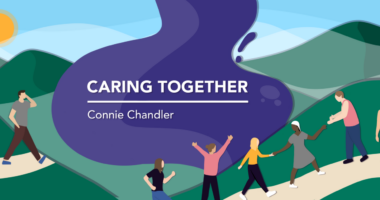SMA vs. muscular dystrophy: What’s the difference?
Both spinal muscular atrophy (SMA) and muscular dystrophy (MD) cause health issues such as muscle wasting and weakness, mobility problems, and potential respiratory issues. Still, when comparing spinal muscular atrophy vs. muscular dystrophy, there are notable differences between the two conditions.
While both diseases affect the muscles of the body, it is not in the same way. The difference of how each disease works is reflected in their names.
SMA damages the motor neurons of the spinal cord, causing muscles to atrophy (shrink).
MD causes dystrophy (tissue degeneration) due to a deficient production of proteins that are needed to form and maintain healthy muscle.
To understand the differences of spinal muscular atrophy vs. muscular dystrophy, you also need to consider their symptoms, treatments, and life expectancy.
Spinal muscular atrophy
SMA is a progressive genetic disorder that affects the nervous system and muscles. Most SMA cases are caused by inherited mutations in the SMN1 gene, which is responsible for providing instructions for making the survival motor neuron (SMN) protein. There is another gene, called SMN2, which also provides instructions for making the SMN protein.
SMA affects approximately one in every 8,000 to 10,000 live births and is the most common cause of genetic-related death in infants and young children.
The disorder is classified into five main types:
- SMA type 0 is a rare, but very severe, form of SMA. It usually affects the fetus during pregnancy.
- SMA type 1 is the most common form of SMA. Disease onset usually is in the first 6 months after birth.
- SMA type 2 is the second-most common form of SMA. Symptoms usually become noticeable between 6 and 18 months after birth.
- SMA type 3 usually has a disease onset between the ages of 18 months and the end of adolescence. It is a mild form of the disease
- SMA type 4 is the mildest type of SMA. People often develop symptoms after age 35.
There are a number of rarer types of SMA, including X-linked infantile SMA, which mainly affects boys, SMA with respiratory distress type 1, and SMA with lower extremity predominance.
There also are two adult-onset forms of rarer SMA types: Finkel type SMA and Kennedy’s disease.
Muscular dystrophy
Muscular dystrophy is a group of conditions that cause muscle weakness that worsen as a person ages. The disease is caused by either inherited or spontaneous mutations in genes that are important for muscle health.
While there are more than 30 different types of MD, some of the more common types include:
- Duchenne MD (DMD) is the most commonly diagnosed form. DMD usually affects boys, but girls can carry the mutated gene and sometimes experience symptoms.
- Becker MD (BMD) is a milder and rarer type that slowly damages skeletal and heart muscles
- Facioscapulohumeral MD is a muscle-wasting disease that causes progressive weakening of the muscles, usually starting in the face, shoulders, and upper arms.
- Limb-girdle MD (LGMD) is a group of neuromuscular disorders that affect the muscles around the shoulders and hips
- Myotonic dystrophy is the most common type of late-developing muscular dystrophy, which causes extended muscle contractions and difficulty relaxing muscles after using them
- Congenital MD is a group of more than 30 disorders involving muscle wasting that is diagnosed at birth or shortly after.
Other types of MD include Emery-Dreifuss MD, tibial MD, and oculopharyngeal MD.
Similarities and differences
Both SMA and MD are caused by mutations in a person’s genetic code that result in muscle weakness and wasting that worsens over time. Both can lead to life-threatening complications.
However, the genetic causes for each disease are different. Most types of SMA are caused by mutations in the SMN1 gene that lead to spinal cord motor neuron destruction.
MD is caused by mutations in genes important for muscle health, including those related to the dystrophin glycoprotein complex, which protects muscle fibers from damage. Dystrophin normally absorbs shocks in muscle cells, helping to protect muscle fibers from damage during muscle contractions.
Symptoms
When comparing the symptoms of spinal muscular atrophy vs. muscular dystrophy, what both have in common is they cause muscle weakness that interferes with a person’s mobility and ability to perform daily tasks.
The two conditions also can cause problems with breathing and swallowing, and scoliosis (curvature) of the spine.
Symptoms of SMA
SMA symptoms vary with the type of the disorder. The earlier in life symptoms appear, the more severe they usually are.
- Type 0 symptoms usually start in the womb with the fetus starting to move less often. After birth, infants may have severe muscle weakness, contraction of the muscles, and difficulty breathing and feeding
- Type 1 symptoms cause infants to have low muscle tone, an inability to sit unsupported or to roll over, difficulty breathing and swallowing, and scoliosis of the spine
- Type 2 symptoms include delayed motor development or a failure to reach motor milestones. It also causes muscle weakness and contractions, and difficulty breathing and eating
- Type 3 symptoms can include muscle weakness in the legs, difficulty walking and balancing, and scoliosis
- Type 4 symptoms usually start in the legs, with progressive muscle weakness. A person with SMA type 4 also may experience fatigue and cramping, along with tremors of the fingers and hands. Most people with type 4 retain the ability to walk.
Symptoms of MD
Different types of MD may affect different muscle groups. But most can cause scoliosis, along with breathing, vision, and heart symptoms.
- Scoliosis is a sideways curvature of the spine, caused by weakness in the muscles supporting the spine.
- Breathing problems result from weakened chest muscles and diaphragm, leading to difficulty breathing and coughing, especially at night.
- Heart problems may include a diseased heart muscle and abnormal heart rhythms (due to electrical conduction issues in the heart). Issues with the heart from not pumping enough blood can lead to heart failure.
- Vision problems are the result of a weakening of the muscles that control the eye’s ability to move and focus. In some cases, cataracts form.
Treatment
When looking at spinal muscular atrophy vs. muscular dystrophy supportive treatments, there are many similarities. Both may involve physical and occupational therapy, dietary counseling, and ways to manage pain and fatigue.
Each disease has its own specific therapies.
Treatment of SMA
SMA treatment relies on disease-modifying therapies to slow the progression of the disease. Currently, two medications and a gene therapy are approved for SMA:
- Evrysdi (risdiplam)
- Spinraza (nusinersen)
- Zolgensma (onasemnogene abeparvovec-xioi), a one-time gene therapy that delivers a working copy of the SMN1 gene to the body’s cells.
Treatment of MD
Among the treatments for people with Duchenne muscular dystrophy is a type of therapy called exon skipping. It helps slow progression of the disease by triggering muscle cells to produce a shorter, but functional, version of the dystrophin protein — the defective or absent protein in people with Duchenne.
An exon is a section of a gene that provides instructions for protein production. In Duchenne and Becker MD, mutations usually cause one or more exons to be lost from the protein-coding sequence of the DMD gene.
Exon-skipping therapy removes certain exons in the DMD gene sequence to establish a better fit with the remaining nearby exons, so that a version of the dystrophin protein can be produced.
There are four approved exon-skipping therapies for Duchenne:
- Exondys 51 (eteplirsen)
- Vyondys 53 (golodirsen)
- Viltepso (viltolarsen)
- Amondys 45 (casimersen).
All four therapies are administered once weekly via an infusion into the bloodstream.
Life expectancy
Both spinal muscular atrophy life expectancy and muscular dystrophy life expectancy vary with the type of the disease and related health conditions. How someone responds to treatment also is a factor in SMA and MD life expectancy.
SMA life expectancy
Spinal muscular atrophy life expectancy varies by type. For some types, SMA life expectancy is very short — from soon after birth to about 2 years, while others may have a normal lifespan. Disease-modifying therapies have shown potential to improve SMA life expectancy.
MD life expectancy
Like spinal muscular atrophy life expectancy, muscular dystrophy life expectancy also varies by type. Some people with muscular dystrophy may have reduced life expectancy while others have a normal lifespan.
SMA News Today is strictly a news and information website about the disease. It does not provide medical advice, diagnosis, or treatment. This content is not intended to be a substitute for professional medical advice, diagnosis, or treatment. Always seek the advice of your physician or other qualified health provider with any questions you may have regarding a medical condition. Never disregard professional medical advice or delay in seeking it because of something you have read on this website.
Recent Posts
- Self-doubt and the endless pursuit of a fulfilling life
- Prenatal therapy extends survival in SMA mice, study finds
- What receiving care from a friend taught me about giving care
- Coordination lacking in transition from SMA pediatric to adult care
- Headache? Brain tumor? Unpacking the roots of illness anxiety
Related articles

 Fact-checked by
Fact-checked by 





